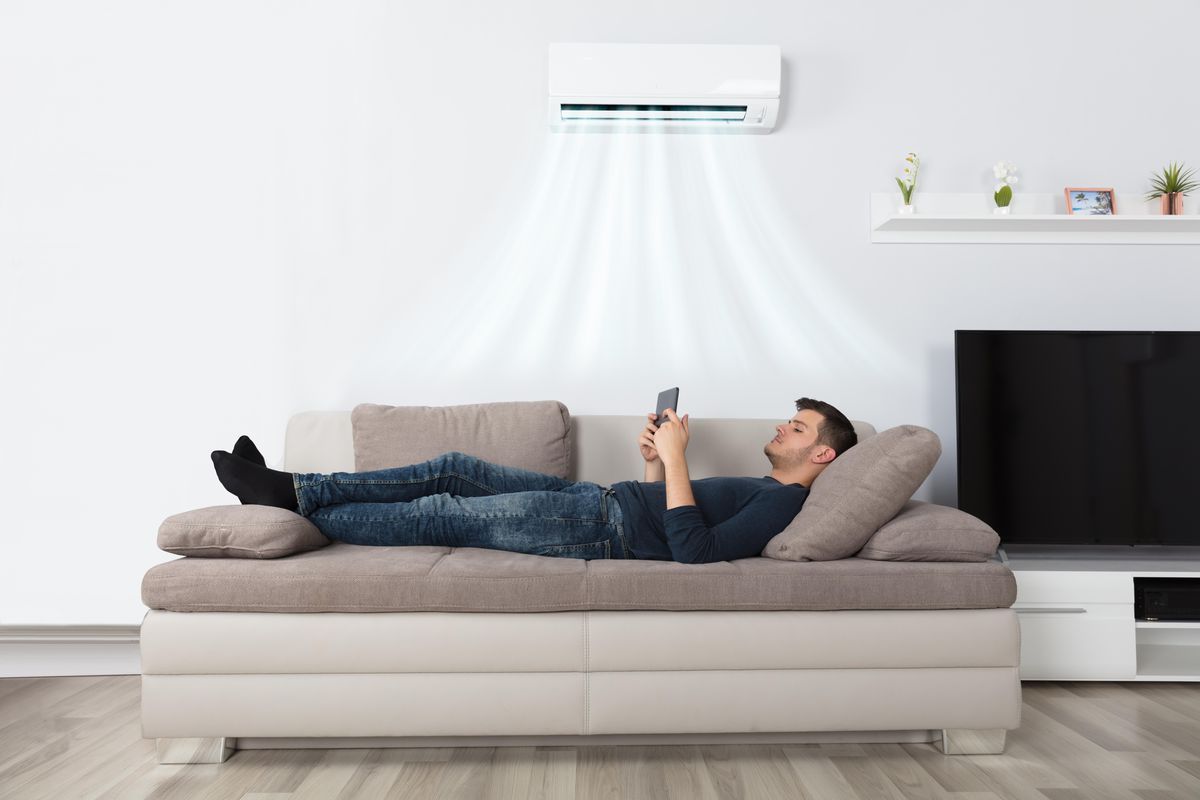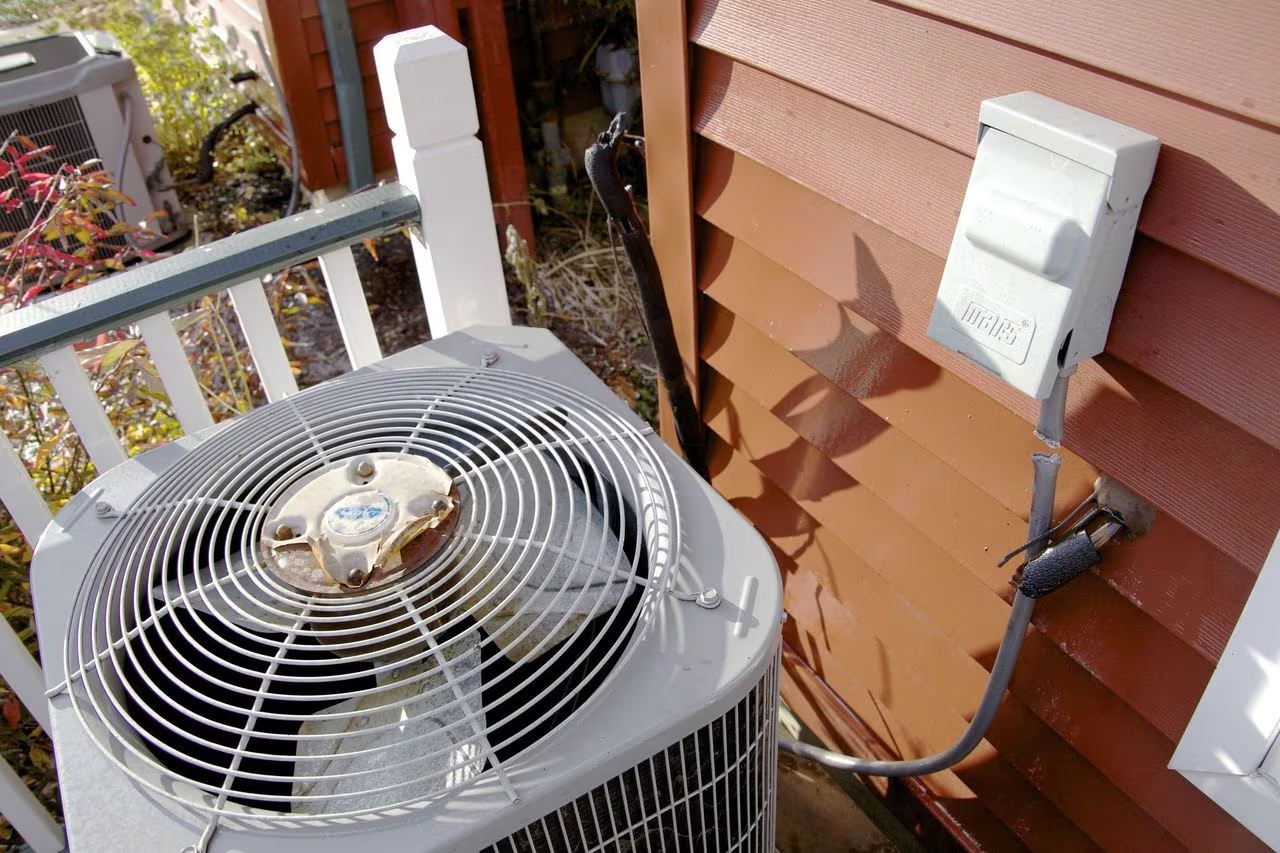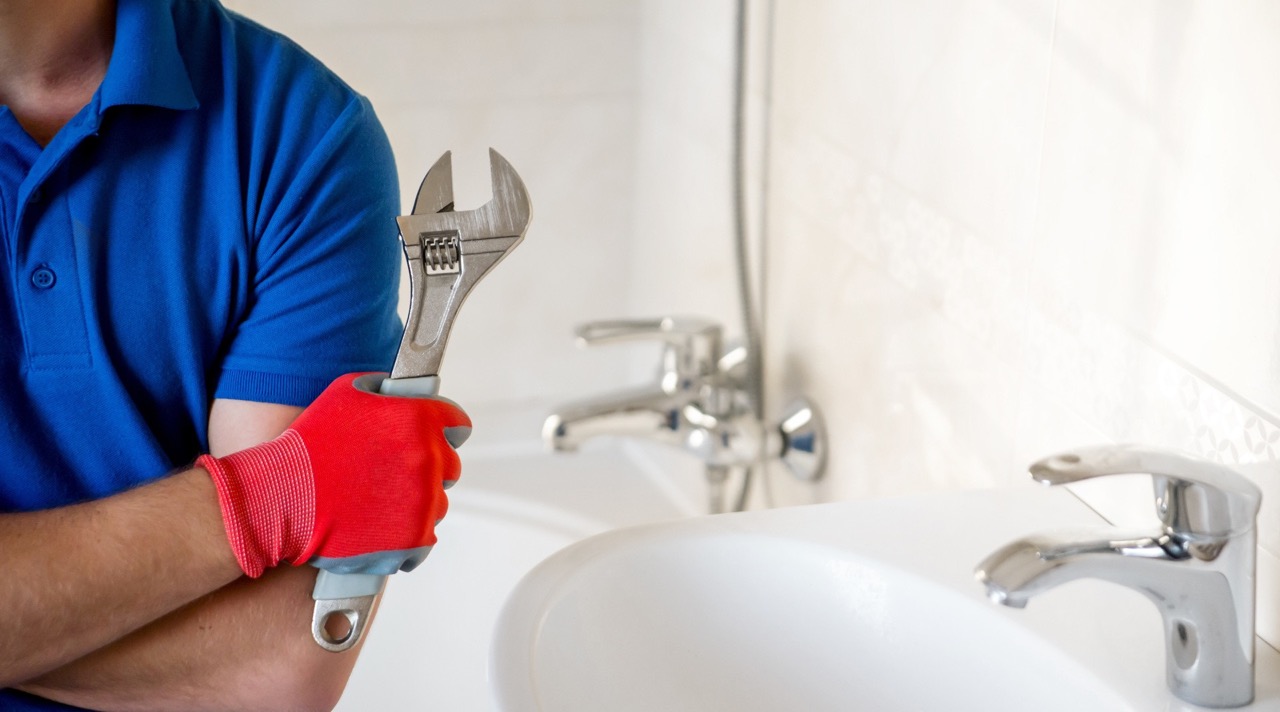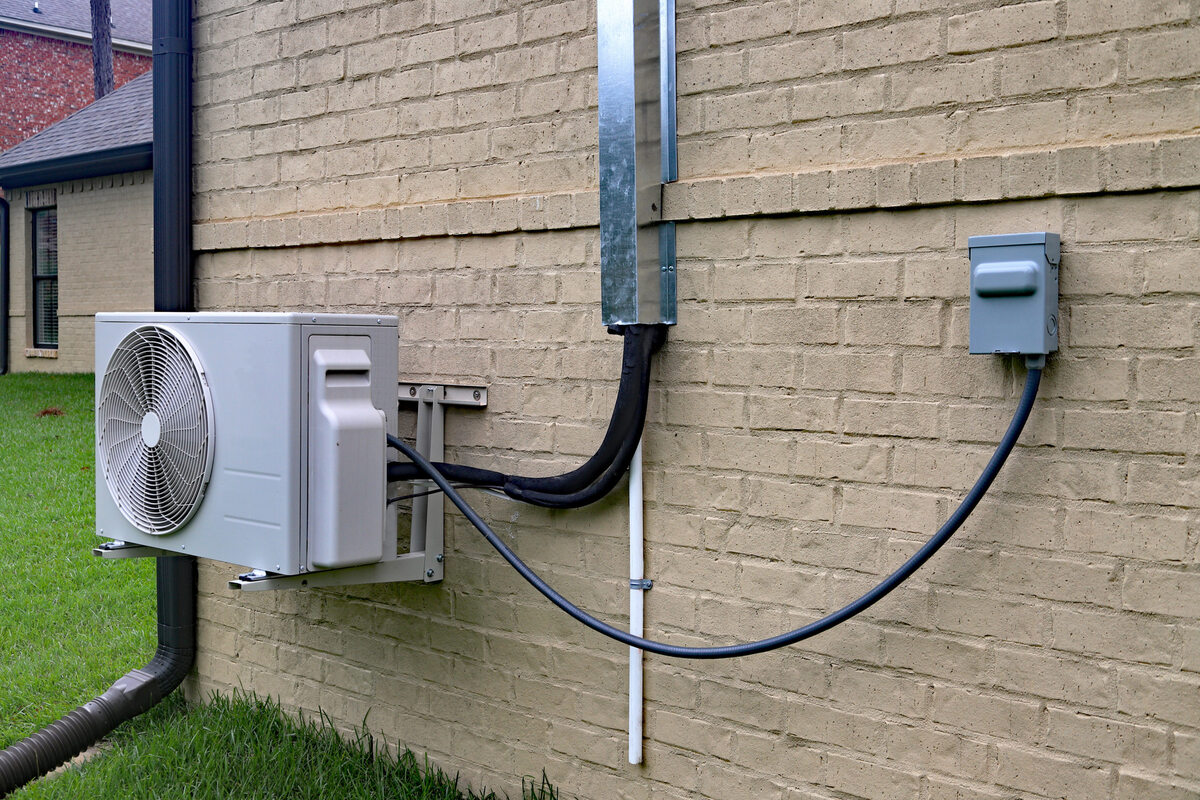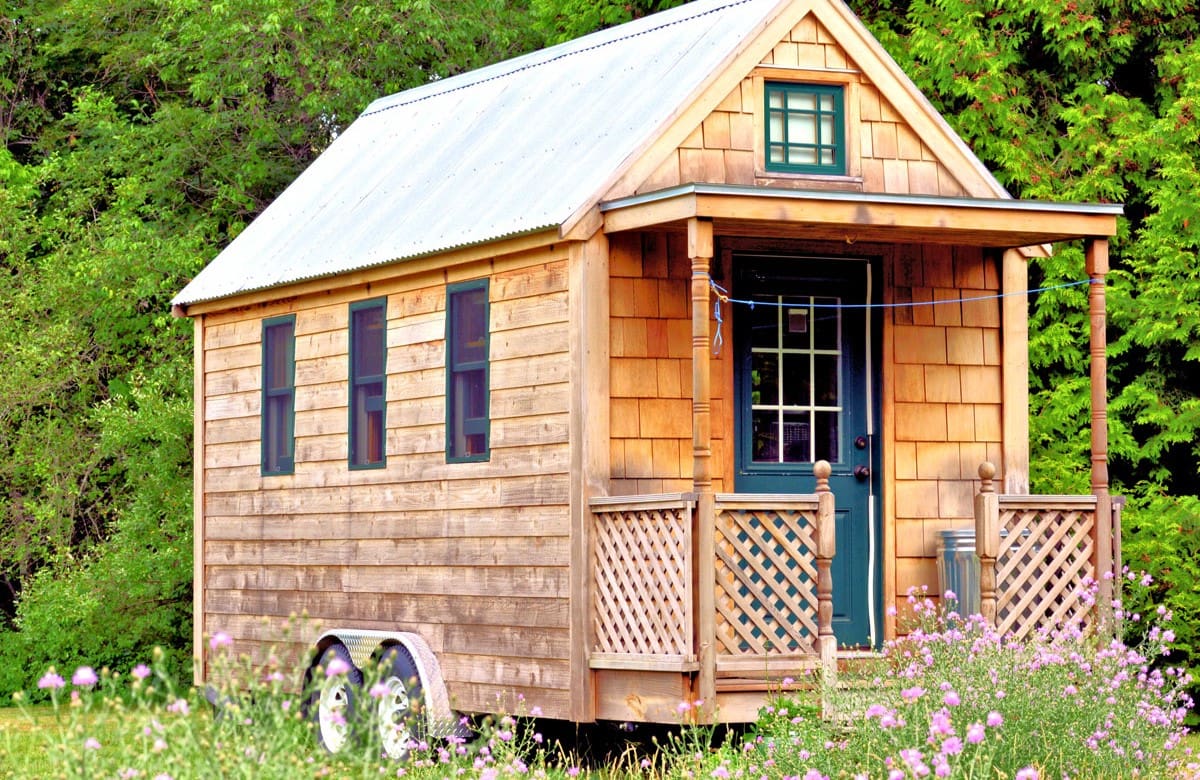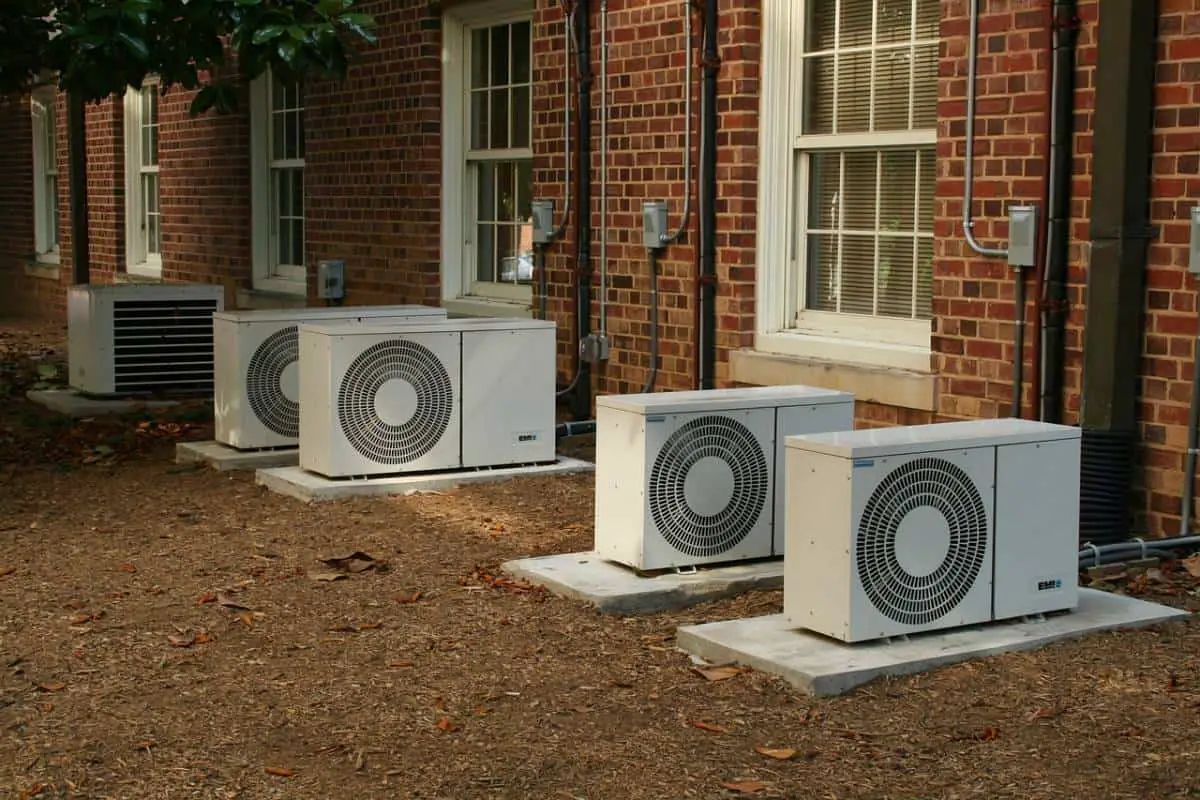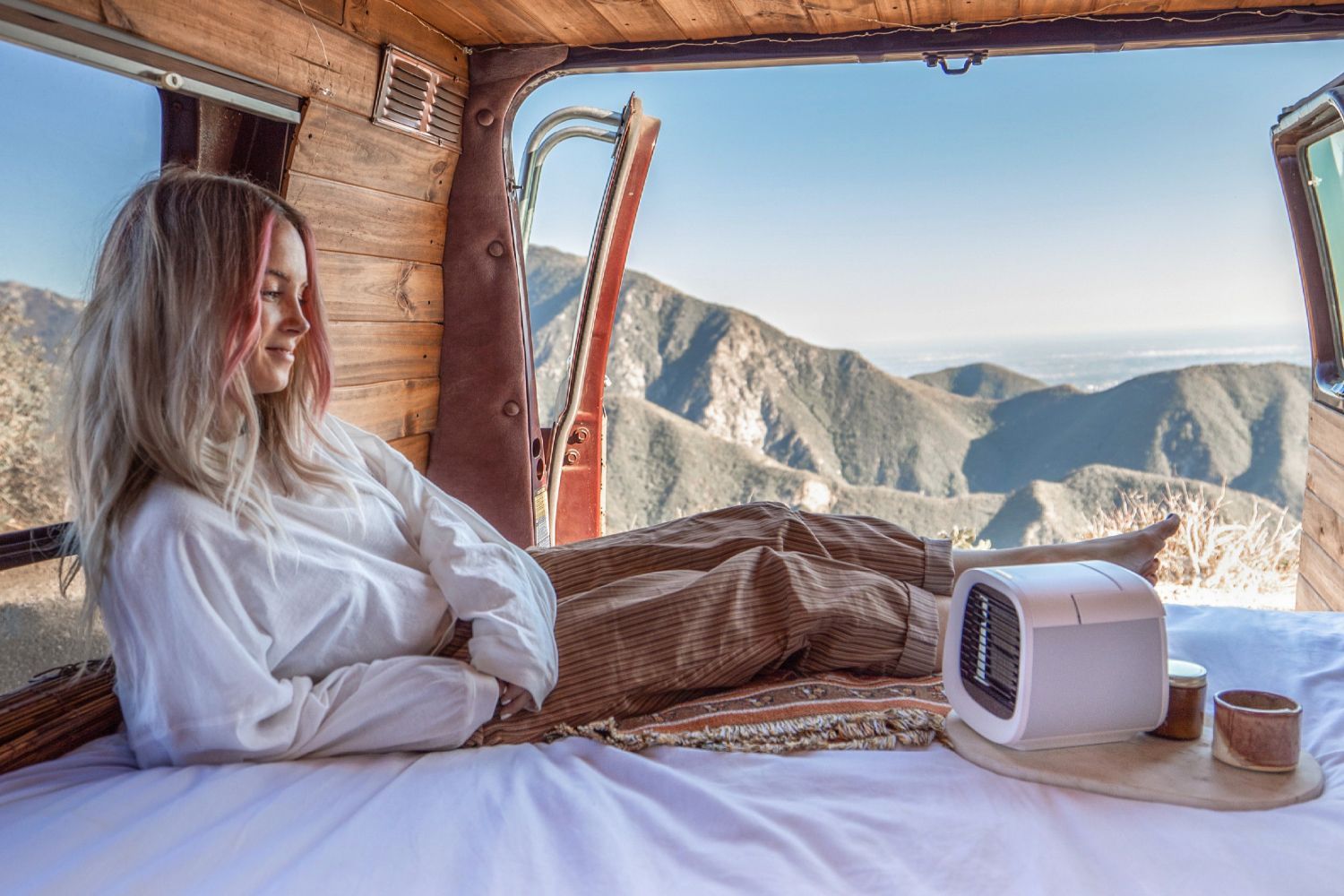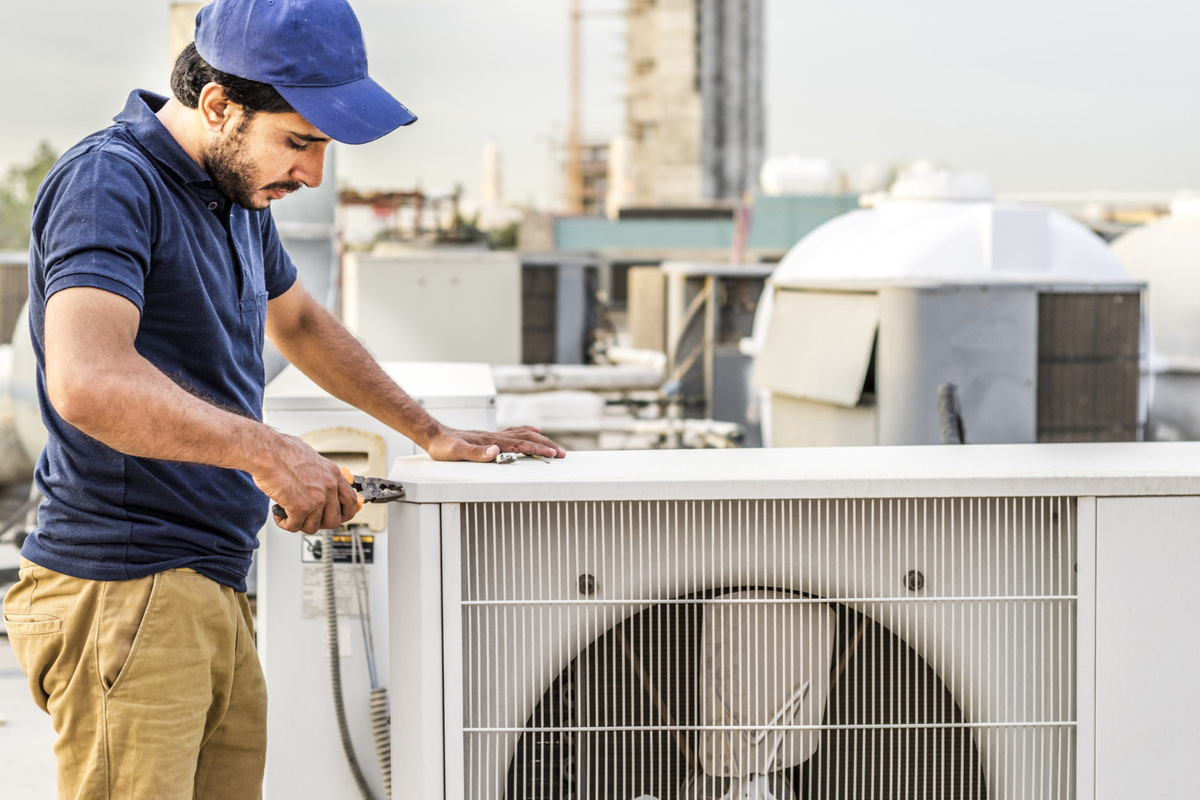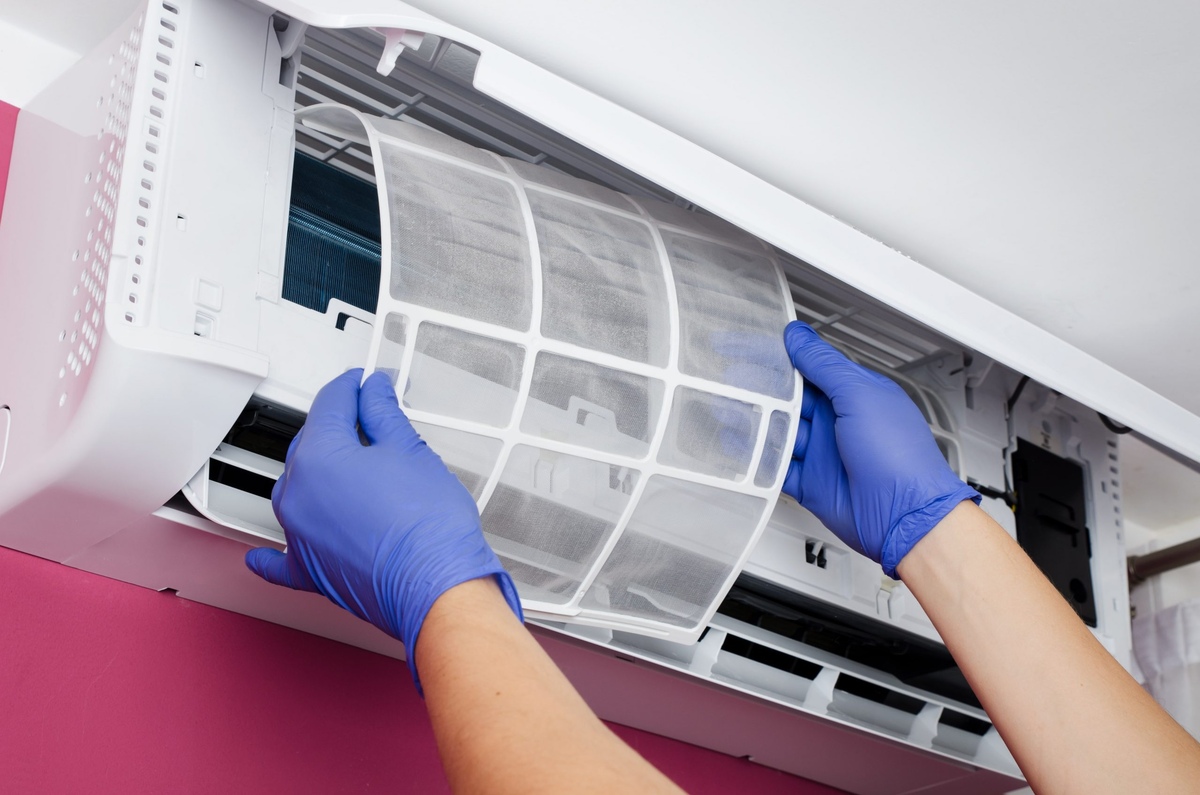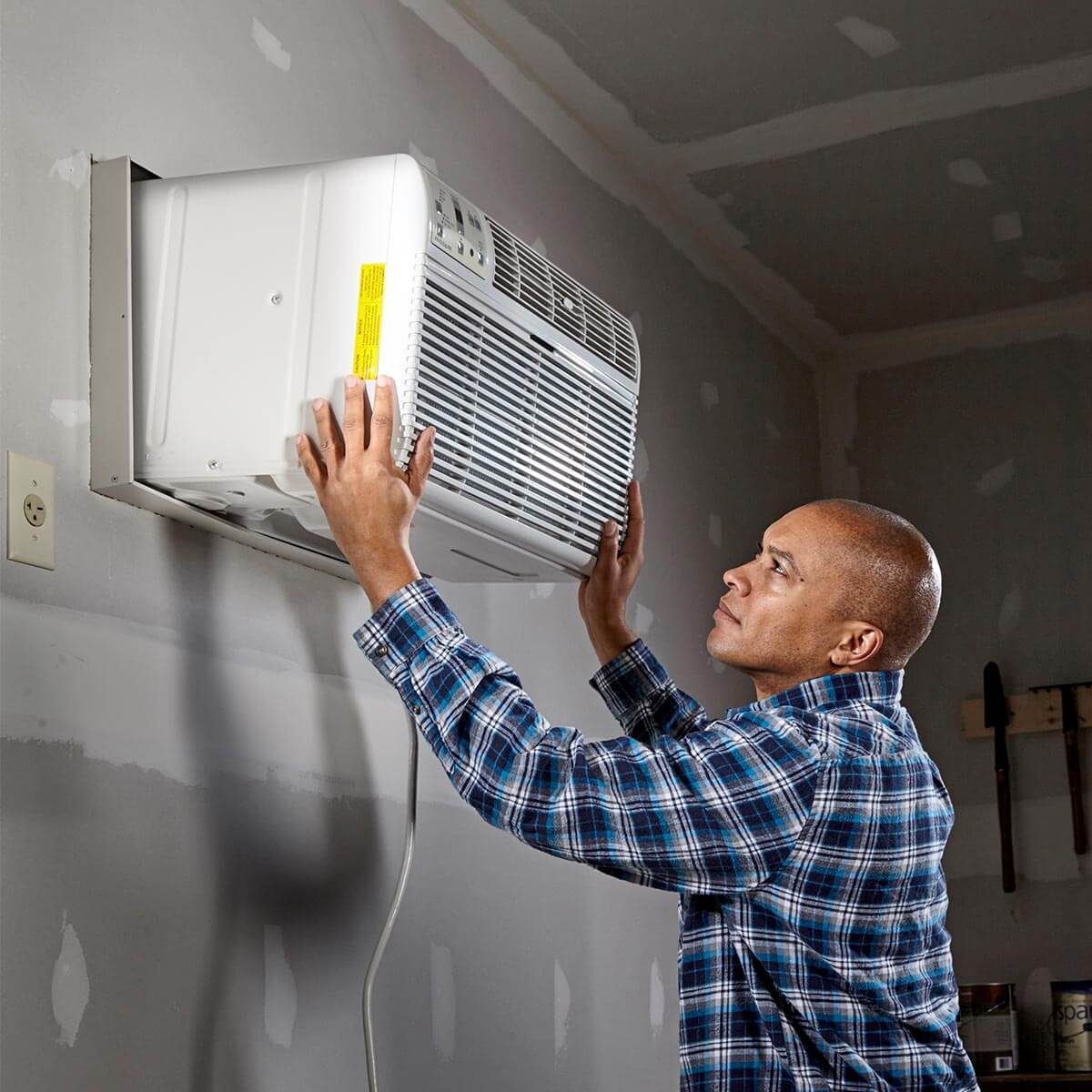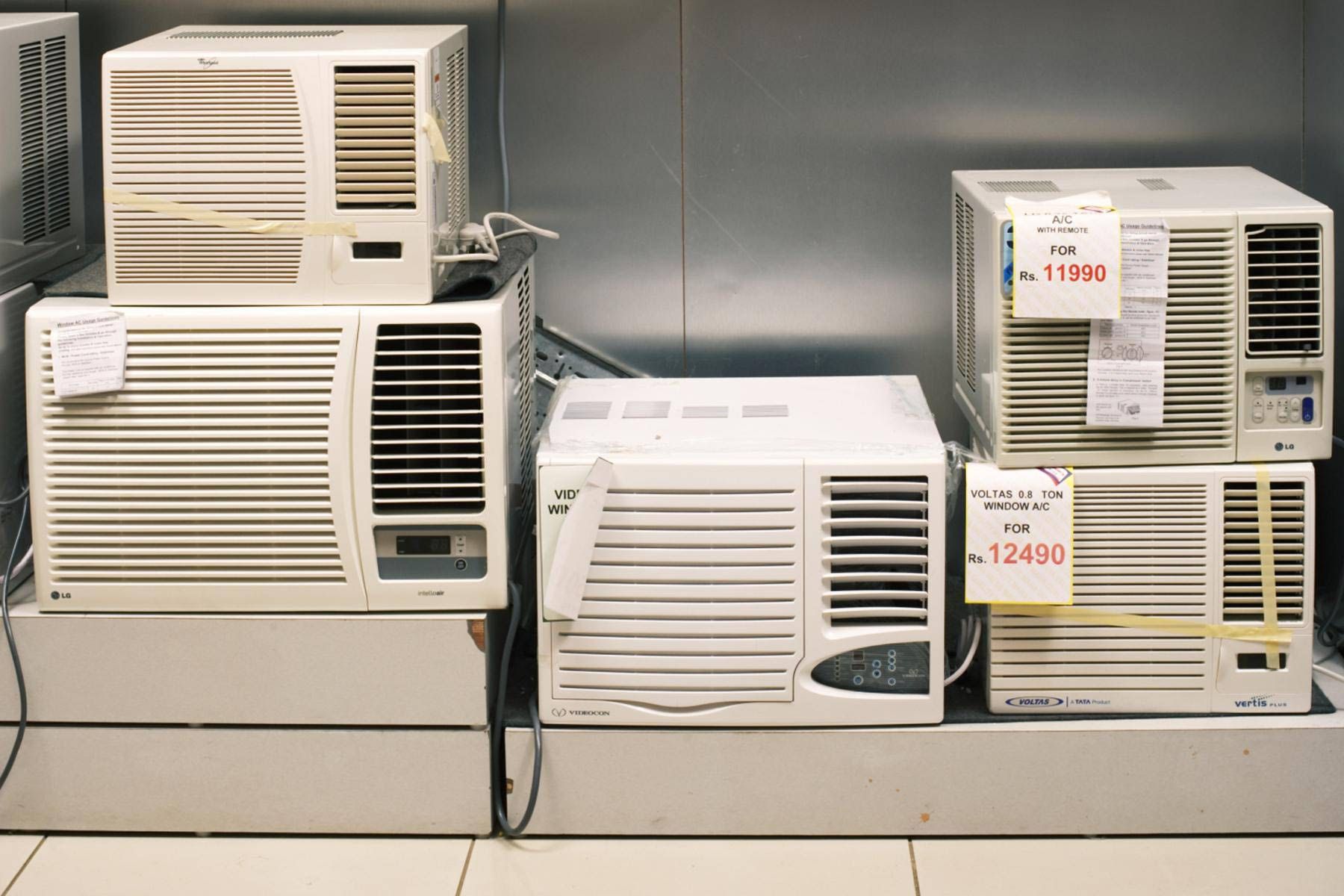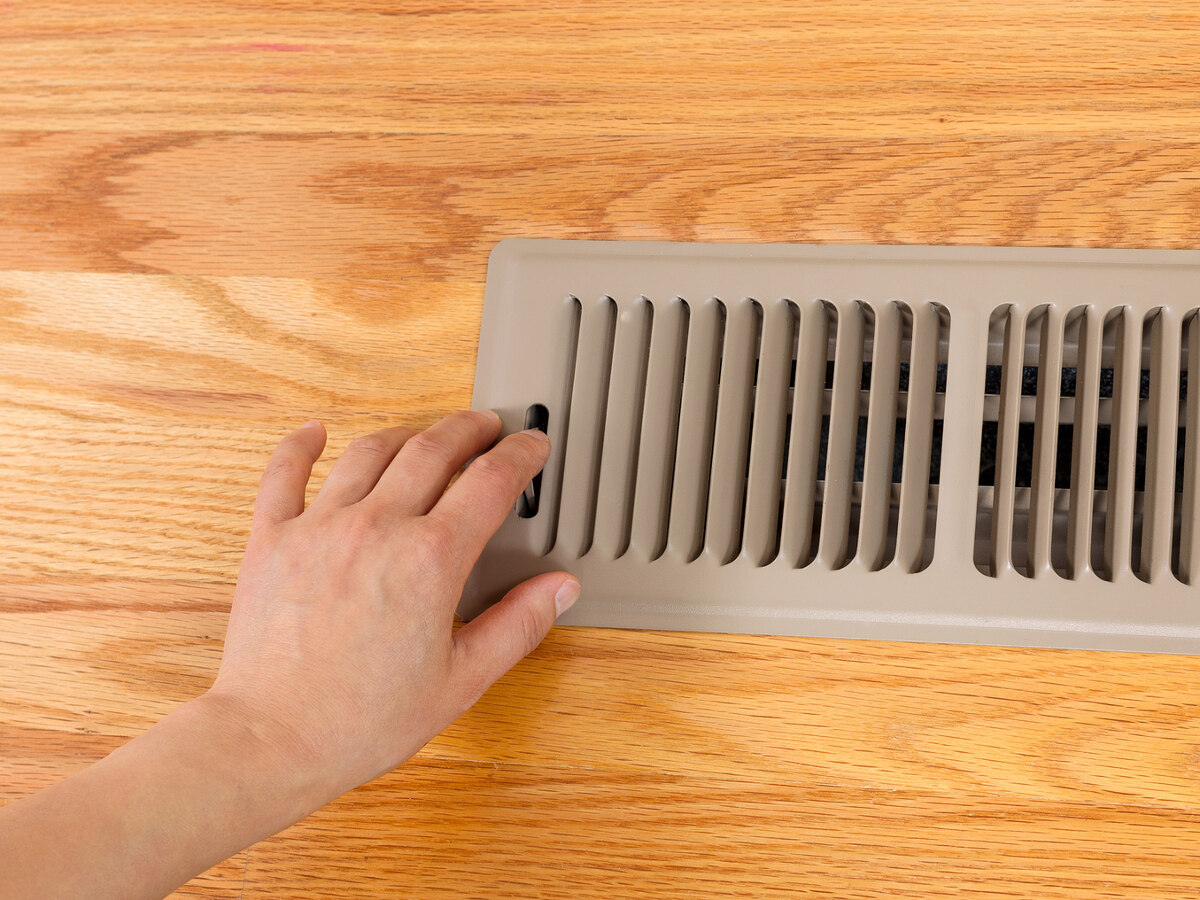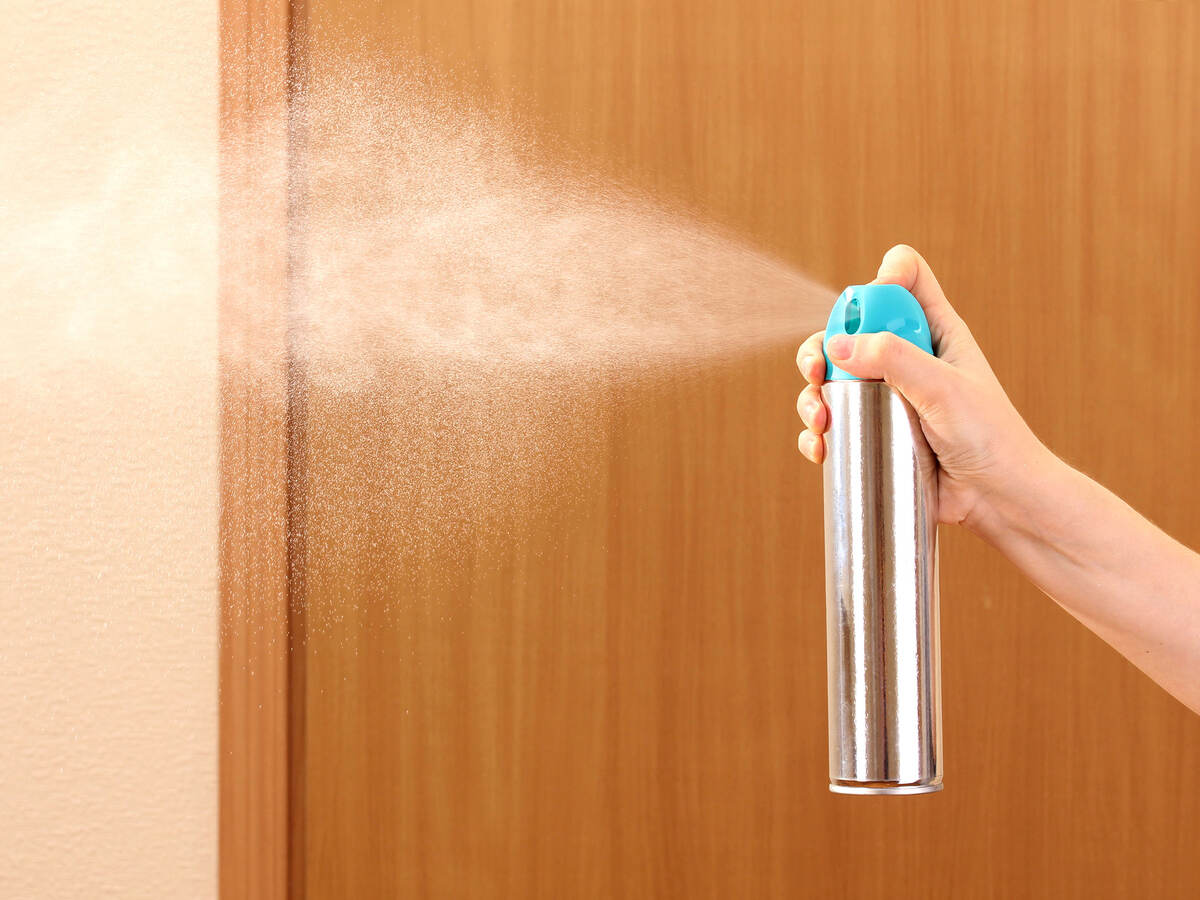Home>Home Maintenance>How Did People Stay Cool Before Air Conditioning


Home Maintenance
How Did People Stay Cool Before Air Conditioning
Modified: March 6, 2024
Discover the ingenious ways people used to stay cool before air conditioning. Enhance your home maintenance skills with creative cooling techniques.
(Many of the links in this article redirect to a specific reviewed product. Your purchase of these products through affiliate links helps to generate commission for Storables.com, at no extra cost. Learn more)
Introduction
Imagine a hot summer day, the sun blazing overhead, and the temperature rising. Nowadays, we turn to our trusty air conditioners to keep us cool and comfortable. But have you ever wondered how people managed to stay cool before the invention of air conditioning?
In the days before modern technology, people relied on ingenious methods to beat the heat and stay comfortable. From natural ventilation techniques to innovative architecture, they found innovative ways to stay cool without the help of artificial cooling systems. Let’s take a journey back in time and explore how our ancestors dealt with the scorching heat.
In this article, we will delve into various strategies used by people to stay cool, including natural ventilation techniques, shading and insulation, architecture and design, water-based cooling systems, natural landscaping, and cultural customs.
So, whether you’re intrigued by the history of home maintenance or looking for eco-friendly ways to beat the heat, read on to discover how people managed to stay cool before the arrival of air conditioning.
Key Takeaways:
- Before air conditioning, people used natural ventilation, shading, water-based cooling, and cultural practices to stay cool. These eco-friendly strategies can still be effective in beating the heat today.
- By harnessing natural elements like airflow, shade, and water, our ancestors stayed cool without air conditioning. We can learn from their ingenuity to create comfortable and sustainable living environments.
Read more: What Did People Use Before Toilet Paper
Natural Ventilation Techniques
Long before the days of air conditioning, people relied on natural ventilation techniques to bring fresh air into their homes and keep the indoor environment cool. These techniques were based on harnessing natural air currents and utilizing thoughtful design elements.
One common method was the use of cross ventilation. This involved strategically placing windows and openings on opposite sides of a building to create a flow of air. By opening windows on one side of the house and doors or windows on the opposite side, a cool breeze could be encouraged to pass through the space, effectively lowering the indoor temperature.
Another technique was the use of high ceilings and tall windows. These features were designed to allow hot air to rise and escape through the upper openings, while cool air was drawn in through lower windows. The height of the ceilings also created more space for air circulation, enhancing the cooling effect.
Furthermore, some homes incorporated features like louvers, vents, and skylights. Louvers were adjustable slats attached to windows or walls, allowing for precise control of air movement. Vents were strategically placed openings that facilitated airflow. Skylights not only brought in natural light but also allowed hot air to escape, especially when combined with proper ceiling insulation.
Additionally, the use of roof vents or cupolas was another effective technique for natural ventilation. These structures were positioned on the roof and had openings that encouraged warm air to rise and escape, while drawing in cooler air from outside.
Overall, natural ventilation techniques relied on the principles of airflow and utilizing the natural breeze to keep a space cool and comfortable. As we explore further, you’ll learn how these techniques were complemented by other strategies to enhance the cooling effect.
Shading and Insulation
When it came to keeping homes cool before air conditioning, shading and insulation played crucial roles in maintaining a comfortable indoor environment. These strategies focused on minimizing the direct impact of sunlight and creating a barrier against heat transfer.
One effective method was the use of exterior shading elements, such as awnings, shutters, and pergolas. These features were strategically positioned to block direct sunlight from entering the windows or hitting the walls of a building. By intercepting the sun’s rays, they prevented excessive heat from penetrating the interior space.
Another popular technique was the use of natural landscaping to provide shade. Trees, shrubs, and vines were strategically planted in the vicinity of a home to create natural shade and reduce solar heat gain. Not only did these natural elements cool the surrounding area, but they also enhanced the aesthetic appeal of the property.
Insulation was another essential aspect of home maintenance for staying cool. Thick walls, double-glazed windows, and adequate attic insulation served as barriers against heat transfer. Insulation helped keep the cool air inside and prevented the outside heat from seeping into the living space.
In regions with hot climates, homes were often designed with thick walls made from materials like adobe or stone, which naturally help stabilize indoor temperatures. These materials have excellent thermal mass properties, absorbing and releasing heat slowly, resulting in a more stable and comfortable indoor environment.
Furthermore, roof insulation played a significant role in reducing heat gain. Techniques such as reflective roofing materials or adding a layer of insulation beneath the roof surface helped to minimize the amount of heat transferred into the building.
By combining shading elements and proper insulation, homeowners could effectively block out the sun’s heat and create a more comfortable indoor environment. These techniques, when integrated with natural ventilation, worked harmoniously to keep spaces cool and pleasant during the hot summer months.
Architecture and Design
The architecture and design of homes played a crucial role in keeping occupants cool before the advent of air conditioning. People designed their houses in a way that maximized natural cooling and minimized heat gain.
One architectural feature commonly found in hot climates was the central courtyard. The courtyard served as a focal point of the house, providing an open space for socializing and allowing air to flow freely through the surrounding rooms. It acted as a natural ventilation hub, drawing cool air inside and facilitating airflow throughout the interior.
In addition to courtyards, many homes incorporated elements such as tall ceilings, large windows, and open floor plans. High ceilings allowed hot air to rise and escape, while windows and doors were strategically placed to capture cooling breezes. Open floor plans allowed air to circulate more freely throughout the space, creating a natural cooling effect.
Ventilation was further enhanced through the use of architectural features such as breezeways, which were covered walkways connecting different areas of the house. Breezeways acted as conduits for airflow, providing a refreshing cross breeze on hot days.
Architectural design also took into account the orientation of the building in relation to the sun. In hot climates, homes were often positioned to take advantage of shade from nearby trees or natural landforms. By utilizing natural shade, homes could minimize solar heat gain and reduce the need for artificial cooling.
Furthermore, the design of rooftops played an important role in maintaining a cool interior. Flat roofs, commonly found in desert regions, allowed for the collection and storage of rainfall, which could then be used for evaporative cooling. The water would evaporate and release cool air, offering relief from the heat.
Architects and designers of yesteryears used a combination of these techniques to create homes that were not just functional but also naturally comfortable. By working with the environment and harnessing natural elements, they crafted spaces that remained cool and refreshing even in the absence of air conditioning.
Before air conditioning, people stayed cool by using fans, opening windows at night, wearing lightweight clothing, and taking cool showers or baths. They also used techniques like using shade, drinking cold beverages, and staying in cooler areas of their homes.
Water-based Cooling Systems
In the days before air conditioning, water-based cooling systems were one of the most effective ways to beat the heat. These systems utilized the cooling properties of water to provide relief from high temperatures.
One common method was evaporative cooling. It involved the use of evaporative coolers, also known as swamp coolers or desert coolers. These devices worked by harnessing the principle of evaporation to lower the temperature of the surrounding air.
The evaporative cooler consisted of a fan and a large pad soaked with water. As the fan circulated air through the pad, the water evaporated and absorbed heat, resulting in cooled air being blown into the living space. Evaporative coolers were particularly effective in arid climates where humidity levels are low.
In addition to evaporative coolers, people used other water-based systems to stay cool. For example, homes were equipped with large water basins or tanks placed strategically in shady areas. These reservoirs were filled with water, and as the air passed over the water surface, it absorbed moisture, creating a cooling effect.
Many homes also had outdoor features such as fountains, pools, or misting systems. These water elements not only provided a refreshing ambiance but also helped to lower the surrounding temperature. The evaporation of water droplets released cool air, providing relief from the heat.
Water-based cooling systems not only provided direct cooling but also increased the humidity levels in dry climates. Dry air can make the heat feel more intense, so by increasing humidity levels, people could alleviate discomfort and make the environment more bearable.
These water-based cooling systems were practical and effective alternatives to air conditioning before its widespread availability. They utilized the natural properties of water to create a more comfortable and refreshing indoor and outdoor environment.
Read more: How Did Air Conditioning Impact Society
Use of Natural Landscaping
Before air conditioning, people relied on natural landscaping strategies to create a cooler and more comfortable outdoor environment. By incorporating elements of nature into their surroundings, they could significantly reduce the heat and enhance the overall comfort of their homes.
One popular technique was the use of trees and vegetation to create shade. Trees were strategically planted around homes to provide natural protection from the sun’s rays. The dense foliage acted as a canopy, blocking direct sunlight from hitting the building and reducing heat transfer to the surrounding areas.
Shrubs and bushes were also commonly used to create a cooling effect. They were planted in strategic locations to provide natural barriers against heat and wind. These plants not only helped to shade the outdoor spaces but also acted as windbreakers, redirecting airflow and creating a more comfortable microclimate.
In addition to providing shade, vegetation helped to cool the air through a process called evapotranspiration. Plants release moisture into the air through their leaves, which cools the surrounding environment. This natural cooling effect was particularly beneficial in arid regions where water conservation was also a priority.
Water features were another important component of natural landscaping to beat the heat. Ponds, streams, and waterfalls were incorporated into outdoor spaces, not only for their aesthetic value but also for their cooling properties. The evaporation of water from these features helped to lower the temperature in their immediate surroundings, creating a refreshing and soothing atmosphere.
Additionally, people designed their outdoor spaces with consideration for airflow and ventilation. Pathways, open areas, and strategically positioned seating allowed for the natural circulation of air, enhancing the cooling effect of the landscape.
By utilizing natural landscaping techniques, homeowners could create a more comfortable and enjoyable outdoor environment. These strategies not only provided relief from the heat but also contributed to the overall beauty and sustainability of the property.
Cultural Practices for Staying Cool
Before the invention of air conditioning, people around the world developed cultural practices and customs to cope with the heat and stay cool during hot summers. These practices were passed down through generations and integrated into their daily routines.
In many warm regions, a common cultural practice was the tradition of taking midday siestas or naps. During the hottest part of the day, when temperatures peaked, people would retreat to cool and shaded areas, often indoors, to rest and recharge. This cultural practice allowed individuals to conserve energy and avoid overheating during the hottest hours.
Traditional clothing also played a role in staying cool. Lightweight and loose-fitting garments made from natural fibers like cotton and linen were preferred, allowing air to circulate freely against the body and promoting sweat evaporation. These breathable materials helped to keep individuals cool and comfortable even in stifling conditions.
Cultural practices also involved adjustments to daily routines. For instance, meals were often adapted to include lighter and more refreshing foods, such as salads, fruits, and chilled soups. These types of meals provided hydration and essential nutrients while minimizing the need for excessive cooking and heat-producing activities.
In many cultures, the timing of outdoor activities was adjusted to avoid the peak heat of the day. For example, agricultural laborers in Mediterranean countries often started working early in the morning and took a break during the hottest hours before resuming their work in the cooler evening hours. This ensured they could work efficiently and reduce the risk of heat-related health issues.
In some cultures, traditional cooling methods were incorporated into everyday life. For instance, in parts of the Middle East and North Africa, people used hand-held fans, made from materials like palm leaves or feathers, to create a cooling breeze. This simple yet effective tool provided personal comfort when air circulation was limited.
Additionally, cultural customs around water played a significant role in staying cool. Many cultures embraced water-based activities and rituals like communal baths, swimming in natural water bodies, or participating in water festivals. These activities not only provided physical relief from the heat but also had a social and cultural significance.
By understanding and adopting these cultural practices, people were able to adapt to hot climates and stay cool without the reliance on modern cooling technologies. These practices not only helped individuals maintain comfort but also reflected a deep connection between culture, environment, and sustainable living.
Conclusion
Before the advent of air conditioning, people employed a variety of strategies to keep themselves cool during hot summers. From natural ventilation techniques to shading and insulation, architecture and design, water-based cooling systems, use of natural landscaping, and cultural practices, they were able to create comfortable living environments without relying on artificial cooling systems.
Natural ventilation techniques utilized airflow and design elements to promote the circulation of cool air and flush out hot air. Cross ventilation, high ceilings, and strategically placed windows allowed for the natural flow of air, keeping spaces cooler.
Shading and insulation were essential in minimizing heat gain. Exterior shading elements, such as awnings and shutters, and the use of trees and vegetation for shade helped protect homes from the direct impact of sunlight. Adequate insulation in walls and roofs prevented heat from penetrating the living space.
The architectural design of homes incorporated features like central courtyards, open floor plans, and breezeways, which facilitated natural airflow and ventilation. These design elements allowed for a cooler indoor environment even without artificial cooling systems.
Water-based cooling systems, such as evaporative coolers and the use of water features, harnessed the cooling properties of water to provide relief from the heat. Evaporative cooling and evaporative features helped lower temperatures and increased humidity levels, creating a more comfortable atmosphere.
Natural landscaping techniques, including planting trees and vegetation strategically, created shade and reduced heat transfer. Water elements like ponds, streams, and fountains added to the cooling effect through evaporation.
Cultural practices, such as taking siestas, wearing breathable clothing, adjusting meal times, and incorporating traditional cooling methods, helped individuals cope with the heat and stay cool. These cultural customs were rooted in the understanding of the local climate and the importance of adapting daily routines to minimize exposure to the heat.
In conclusion, the ingenuity and resourcefulness of our ancestors provide valuable lessons on how to maintain comfortable living environments in the absence of modern air conditioning. By incorporating these techniques into our homes and lifestyles, we can not only reduce our reliance on artificial cooling but also embrace sustainable and environmentally friendly practices. As we look to the future, it’s important to remember and adopt these time-tested strategies to stay cool while minimizing our impact on the planet.
Frequently Asked Questions about How Did People Stay Cool Before Air Conditioning
Was this page helpful?
At Storables.com, we guarantee accurate and reliable information. Our content, validated by Expert Board Contributors, is crafted following stringent Editorial Policies. We're committed to providing you with well-researched, expert-backed insights for all your informational needs.
